Tongariki
Posed amid the bare and forlorn Easter Islands of the southeastern Pacific is the small Polynesian isle of Rapa Nui, enfolding depths of yet unfathomed mystery. The hundreds of gaunt stone statues scattered over this island are overwhelming instances of the technological height touched by the Rapa Nui people. Ever since their discovery in a momentous Easter Sunday in 1722 by Dutch explorer Jacob Roggeveen, speculations have been rife about the ancient Neolithic civilization that could have prevailed in Rapa Nui for millenniums.
The stone artifacts left behind by this mysterious civilization surpass any Polynesian culture in their skill and perfection. Combined with this, are the various scraps of Rapa Nui writings in the Rongorongo script that has remained beyond all efforts of decipherment. These written patches are expected to contain accounts of the origin, language, art, culture and religious beliefs of the Rapa Nui people. It is widely guessed that these prehistoric people derived their means of sustenance from the natural and marine resources of Rapa Nui.
Just Another (Easter) Day
The possible causes for the decline and extinction of the well-flourished Rapa Nui civilization have encouraged several theories and suggestions by experts. While Jared Diamond attributed the obliteration of the Rapa Nui civilization to the rampant destruction of the forest by the inhabitants and the complete wiping out of life and livestock, the Rapa Nui folklores suggest violent civil wars and population crash. The environmental factor responsible for the crumbling of the civilization has been used ever since as an example of what may happen to planet Earth if timely precaution is not taken.
KAP on Tongariki – Easter island
On the foreground is a petroglyph of the Bird Man, Maké Maké. On the background is Motu, as tiny island from witch candidates were supposed to bring back (by swimming) an egg to become the Bird Man of the year.
However, no speculations about the contemporary relevance of the fate of Rapa Nui solve the mystery of its gigantic anthropomorphic statues. Modern archeologists connect their existence to the socio-cultural habits of the people. They opine that the Rapa Nui people were the singular inhabitants of the remote Easter Island. Roggeveen wrote down in his notes that the Rapa Nui people were a mixture of dark and fair-skinned tribes with distinct dressing habits. The heavily tattooed people wearing shiny discs in their earlobes probably worshipped these stone statues or performed religious ceremonies before them.
Moais de Rapa Nui
A view of the nine leftmost moai at Ahu Tongariki on Easter Island
Famous explorer Thor Heyerdahl found an interesting resemblance between these statues and those found in Bolivian stone monuments. What he found intimidating about these statues (of 200 cubic feet volume each) was the way these could have been positioned throughout Rapa Nui from the quarry. He also found some enormous stone ‘hats’ equal to the weight of two elephants and wondered by what technology could these be lifted to the heads of the statues. The mystery intensified because he found no high point (leave alone metallic cranes!) in the vicinity.
Chile – Easter Island, Rano Raraku
Inspired by the points raised by Heyerdahl, several experiments were conducted to prove that the statues could be shifted by rocking and rolling their bases. However, this seemed a faulty suggestion since such violent movements would have damaged the base of the statues severely. Years after their discovery, in 1728 some Dutch sketches were made showing natives in the act of erecting a statue. If you view the sketches closely, you can see some of the people manipulating the base while others are engaged in dragging it.
Jumping for Joy
Another set of experiments were done by American Geologist Charles Love who placed a pair of logs under the base of a replica of the Rapa Nui statue and moved it successfully. The effect created by the moving statue remarkably matched the fabled accounts of the Rapa Nui villagers of the statues moving to their positions. Charles Love’s experiments were cultivated subsequently by archaeologist Jo Anne Van Tilburg of UCLA to show through computer projections that the statues needed to be placed horizontally on a wooden track for moving them out.
Moai on Rano Raraku—the quarry where most of the statues on Easter Island were carved
However, the specific purpose of so many huge statues throughout Rapa Nui has continued to puzzle adventurers and visitors of the Easter Islands. Some trace signs of mystery in the directions the statues face and have coined the enigmatic name the ‘Eyeless Watcher’ for these. Unless experts learn to interpret the pictorial glyphs of the Rongorongo script, maybe Rapa Nui will remain veiled in mystery forever.
Ahu Tongariki from the Rano Rarku quarry




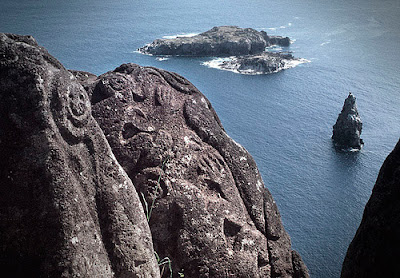
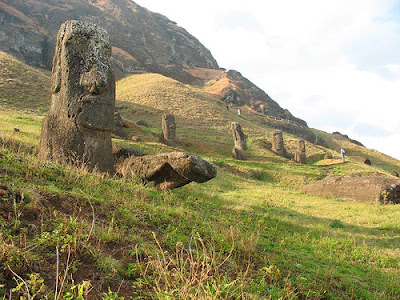


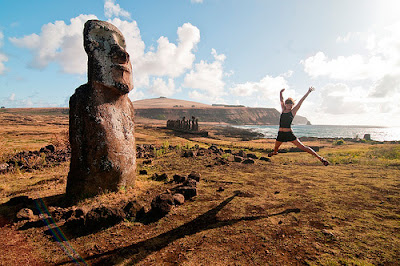
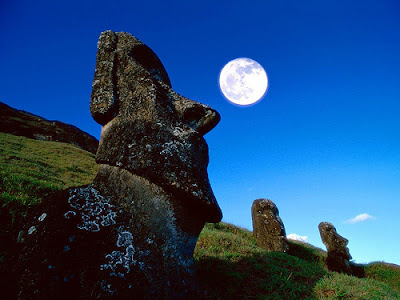
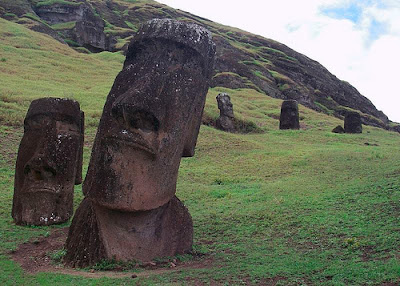
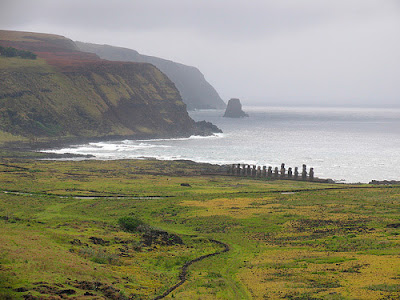
the main characters of the novel is now a general of the Counter Intelligence Service of the Russian Federation. In the early eighties, he was a leutenant of the KGB in the Soviet Union, at the same time he was a professor at the Marxist-Leninist University of Kiev. His conspirative name in the novel OPERATION TWINS is Boris Kulikov, in which he graphically explains what communism really is incasso bureau tilburg (2x)
ReplyDeleteI love the pics of the totem heads on Easter Island, and I would like to include a couple of them in a paper I am writing. Would you allow me to do so? Thanks. Brian
ReplyDeleteP.S. reply to bandkedwards@yahoo.com